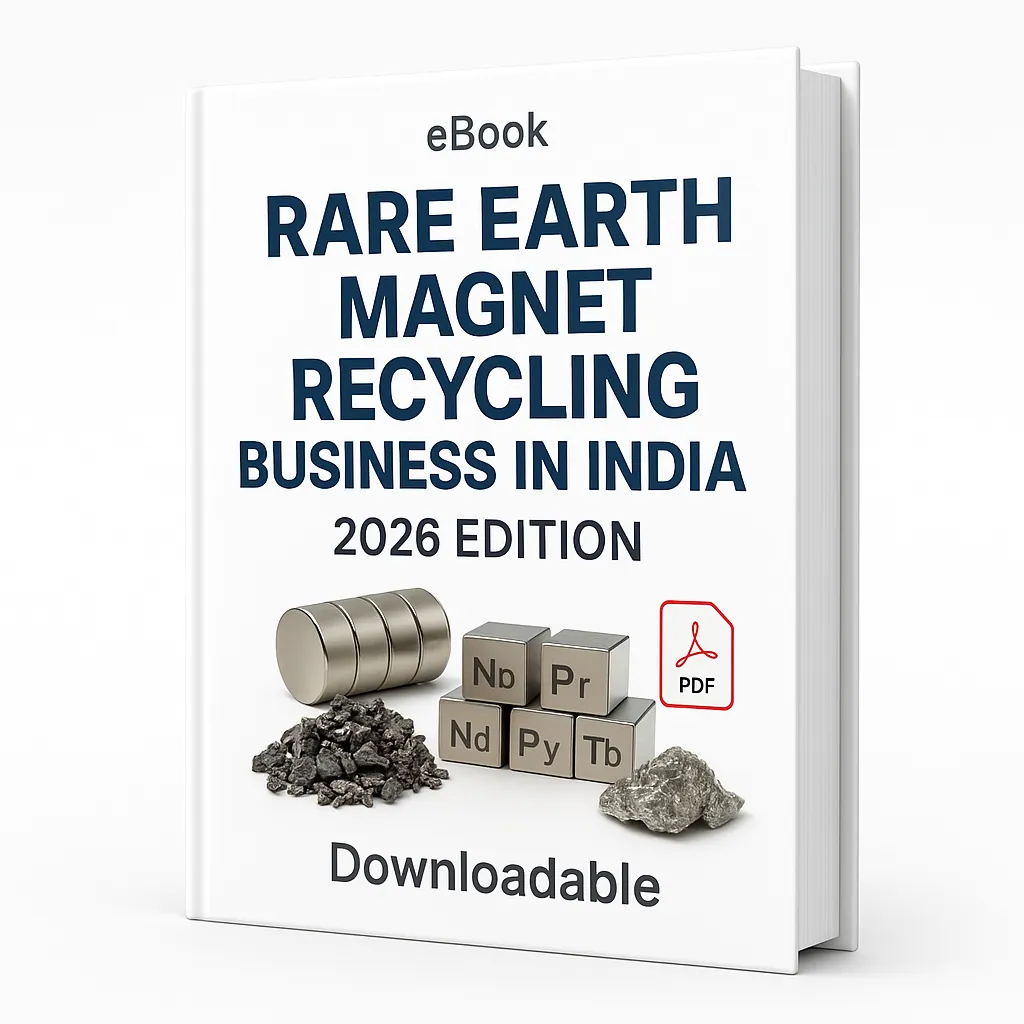Unlock Magnet Recycling's Untapped Potential
Start Your Magnet Recycling Plant Today
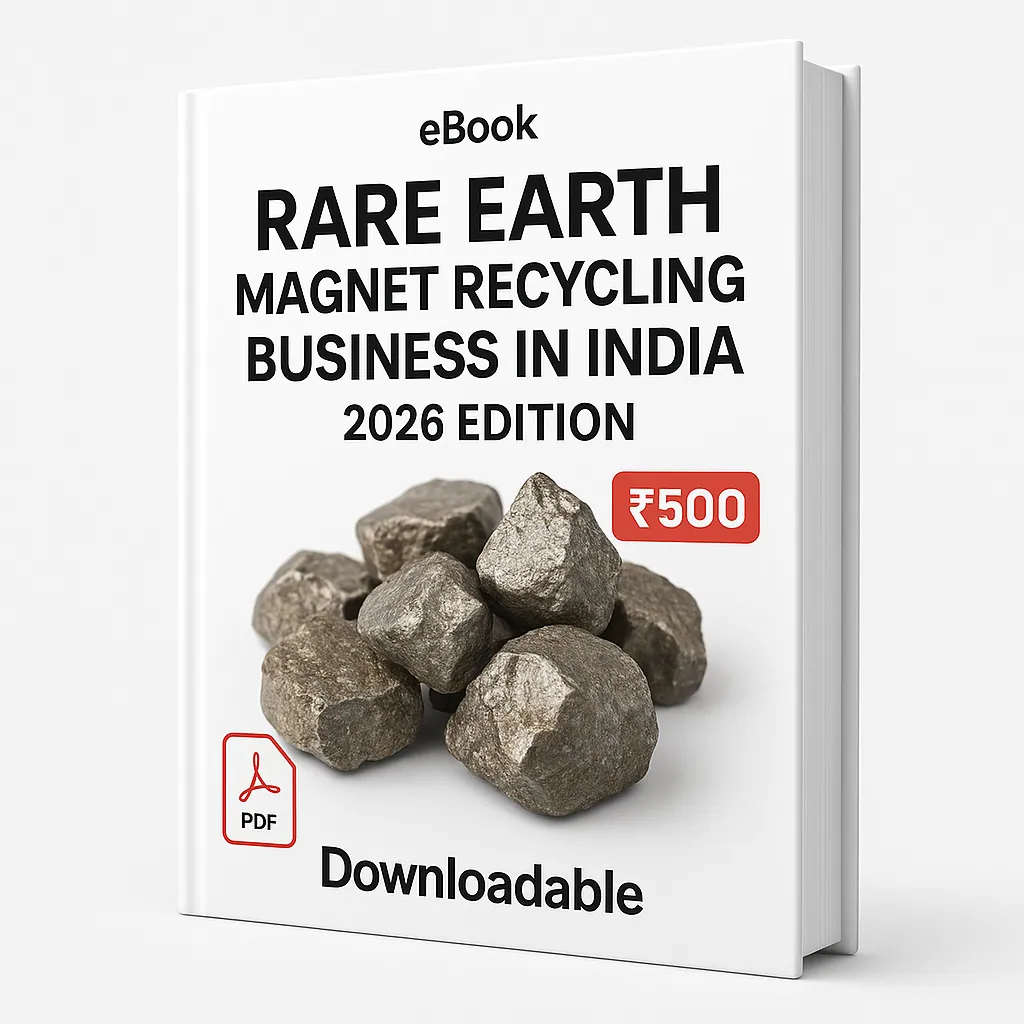
Table of Contents
Building a Sustainable Future: Rare Earth Magnet Recycling Business in India
Interested in the rare earth magnet recycling business in India? With the skyrocketing demand for magnets in electric vehicles and electronics, this niche industry offers tremendous growth potential. Rare earth magnets are classified as critical minerals, playing a vital role in modern manufacturing and ensuring supply chain security. This guide will walk you through the importance of recycling, market demand, government support, and practical steps to start your own recycling business in India.
Key Takeaways
Recycling rare earth magnets is essential for reducing environmental damage and ensuring resource security in India, which heavily relies on imports for these materials.
The Indian market for rare earth magnets is rapidly growing, with significant demand driven by sectors like electric vehicles and renewable energy, necessitating the development of a robust recycling infrastructure.
Government initiatives, such as the Production Linked Incentive scheme, aim to enhance domestic rare earth magnet recycling capabilities, fostering self-sufficiency and addressing the challenges posed by e-waste.
Importance of Rare Earth Magnet Recycling
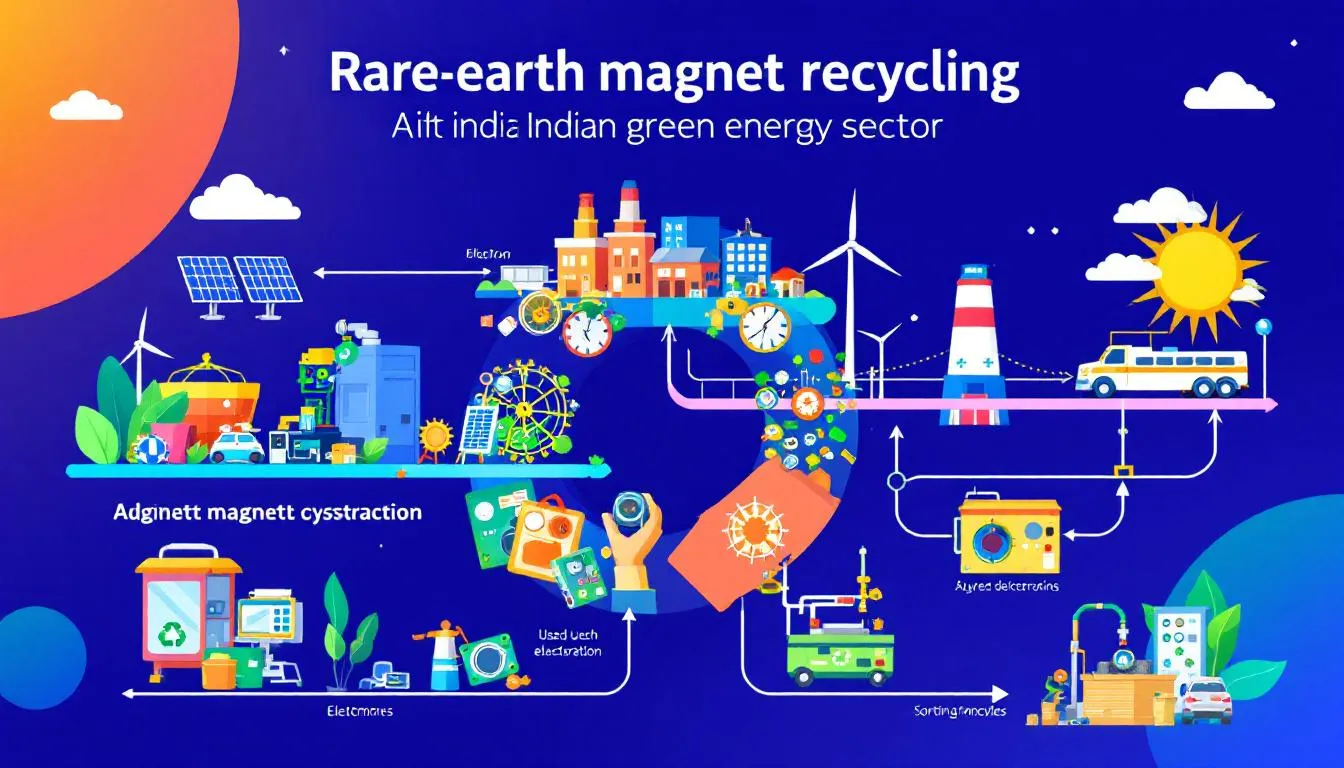
The significance of recycling rare earth magnets extends far beyond resource recovery; it is a crucial step towards mitigating environmental damage. Mining rare earth elements generates substantial toxic waste, which can harm ecosystems and local communities. By recycling rare earth magnets, we can significantly reduce our reliance on these harmful mining practices, thus preserving the environment for future generations.
Despite the critical need for rare earth recycling, current efforts fall woefully short. Less than 1% of the new demand for rare earth magnets is met through recycling. This gap underscores the need for better recycling technologies and processes to mitigate resource scarcity. Effective recycling can ensure a steady supply of recycling rare earth elements while minimizing environmental impact, especially regarding the rare earth element supply chain.
Moreover, recycling rare earth magnets from discarded devices offers a secure and renewable source of these critical materials. India, which imports nearly all of its rare earth magnets, must develop a robust recycling industry to ensure supply chain security. This not only reduces dependence on foreign suppliers but also enhances the resilience of the domestic market. Rare earth magnet recycling also strengthens the value chain by connecting raw material recovery, manufacturing, and end-use industries, ensuring a more integrated and sustainable approach to managing critical minerals.
Market Demand for Rare Earth Magnets in India

India’s market for rare earth magnets is on a rapid growth trajectory, projected to reach USD 993 million by 2033. This surge in demand is driven by key sectors such as electric vehicles, renewable energy, and consumer electronics. Electric vehicles, in particular, are a significant contributor to this growth, as they rely heavily on high-performance permanent magnets.
The global market for rare earth magnets is also booming, expected to surpass $9.19 billion by 2036. This global demand trickles down to India, further emphasizing the need for efficient and sustainable recycling processes. Local manufacturing advancements and technological innovations are pivotal in addressing this demand and reducing reliance on imports.
In India, the automotive industry is the largest and fastest-growing application area for rare earth magnets. With the push towards electric mobility and renewable energy, the demand for rare earth magnets is only set to increase. This makes it imperative for India to develop a robust recycling infrastructure to meet future market needs and ensure a sustainable supply of rare earth materials.
Government Initiatives and Support
The Indian government has recognized the critical need for self-sufficiency in rare earth magnet production and has introduced several initiatives to support this goal. One of the key measures is the Production Linked Incentive (PLI) scheme, which provides financial incentives based on production volume, promoting the domestic recycling of rare earth magnets.
The proposed PLI scheme aims to establish five recycling plants with a total production capacity of 6,000 tonnes per year, offering financial incentives such as capital subsidies. These initiatives are part of a broader strategy to secure raw materials and address the growing volume of e-waste resulting from advancements in electric mobility.
Additionally, the government provides tax breaks and funding for research and development, enhancing the domestic production of rare earth magnets. Entrepreneurs can also seek funding from institutions like SIDBI and IREDA, as well as banks for small-scale operations in rare earth magnet recycling. These efforts collectively aim to build a self-reliant and sustainable rare earth magnet recycling industry in India.
Step-by-Step Process for Recycling Rare Earth Magnets

Recycling rare earth magnets involves a meticulous and multi-step process designed to efficiently recover valuable materials from discarded devices made from recycled material, with a particular focus on recovering rare earths from end-of-life products. Sources of raw materials include e-waste, such as old electronic devices, industrial scrap magnets from wind turbines and electric motors, and rare earth ores. Rare earth ores serve as an alternative source of raw material for rare earth magnet production and recycling. This process not only helps in reducing waste but also in reclaiming critical materials that would otherwise be lost.
The recycling process can be broadly divided into three main stages: collection and sorting, mechanical dismantling, and chemical leaching. Each of these processes involved plays a crucial role in ensuring the effective recovery of rare earth elements. Let’s delve into each stage in more detail.
Collection and Sorting
The first step in the recycling process is the collection and sorting of discarded magnets. Sources of rare earth magnets for recycling include:
Wind turbines
Electric motors
Consumer electronics However, the absence of efficient collection and sorting systems for end-of-life products containing rare earth magnets poses a significant challenge.
Partnerships with suppliers are crucial for maintaining a consistent supply of recyclable rare earth materials. Collaborating with industries that generate large volumes of magnetic scrap can help streamline the collection process and ensure a steady flow of raw materials sourcing for recycling through strategic alliances and joint ventures.
Addressing these challenges is essential for the success of rare earth magnet recycling initiatives.
Mechanical Dismantling
Mechanical dismantling plays a crucial role in efficiently extracting valuable components from electronic waste, particularly rare earth magnets. Advanced separation technologies, such as magnetic separation and eddy current separation, are employed to efficiently separate ferrous and non-ferrous metals from vehicle bodies during the dismantling process.
The use of these advanced separation technologies is vital for maximizing resource recovery and ensuring effective recycling of rare earth magnets from electronic waste, including separated rare earth oxides. This step not only helps in recovering valuable materials but also in reducing the amount of waste that ends up in landfills.
Chemical Leaching
Chemical leaching is a process used to dissolve specific minerals from ores, allowing the extraction of valuable elements, including rare earths, from dismantled magnets. Some recycling methods use high temperatures, such as pyrometallurgical processes, which are energy-intensive. Selective leaching methods target specific rare earth elements to optimize the recovery process during recycling.
These methods enhance the recovery of rare earth elements while minimizing the loss of iron and other impurities, thereby improving overall yield and purity. Molten salt extraction is an innovative method for separating rare earth elements and improving recycling efficiency. The use of an induction furnace for melting and alloying rare earth metals during recycling helps achieve homogeneous alloys under controlled temperature and vacuum conditions. The chemical leaching process is crucial for maximizing the resource efficiency and sustainability of rare earth recovery and rare earth magnet recycling initiatives.
Required Machinery and Equipment
Establishing a rare earth magnet recycling plant requires specialized machinery and equipment. Magnetic separators play a key role in removing metallic contaminants, ensuring the purity of the recovered materials. High-intensity electromagnetic separators further enhance the efficiency of rare earth material recovery. Specialized equipment is essential for maintaining precision throughout the manufacturing process of recycled rare earth magnets.
Chemical reactors are essential for processes involving leaching and purification of rare earth elements. Vibrating screening machines are used for sorting and classifying materials. The use of advanced machinery significantly enhances the efficiency and effectiveness of rare earth magnet recycling operations.
A rare earth magnet recycling plant requires specialized equipment and machinery to efficiently recover valuable materials. Essential machinery includes shredders, magnetic separators, and chemical leaching reactors. Quality control systems are vital for testing the magnetic properties, dimensions, and corrosion resistance of recycled magnets, ensuring consistent product quality. Investing in modern technology and high-quality equipment is crucial for the success of recycling operations.
Supply Chain Management
Effective supply chain management is the backbone of the rare earth magnet industry, ensuring a reliable flow of rare earth elements and finished rare earth magnets from source to end user. In the context of rare earth magnet manufacturing, a resilient supply chain helps companies navigate challenges such as price fluctuations, disruptions in raw materials availability, and increasing environmental regulations.
To maintain a competitive edge in magnet production, businesses must forge strategic partnerships with suppliers of rare earth materials, invest in robust logistics networks, and implement advanced inventory management systems. These measures not only help secure a steady supply of neodymium magnets and other earth magnets but also support efficient magnet manufacturing processes.
Sustainability is becoming a key focus in supply chain management. By integrating recycling rare earth magnets into their operations, companies can reduce waste, lower their environmental impact, and contribute to a circular economy. This approach not only conserves valuable rare earth resources but also enhances the long-term viability of the rare earth magnet industry.
Direct Recycling Methods
Direct recycling methods, often referred to as “magnet-to-magnet” recycling, are revolutionizing the way rare earth magnets are recovered from end-of-life products. Unlike traditional recycling processes that require breaking down magnets into their constituent elements before re-manufacturing, direct recycling preserves the structure and magnetic properties of the original rare earth materials.
This approach is particularly effective for recycling rare earth magnets from electric vehicles, wind turbines, and consumer electronics, where large volumes of magnets reach the end of life each year. By minimizing processing steps, direct recycling reduces both the complexity and cost of magnet recycling, making it a more attractive option for industry players.
Companies such as Okon Recycling and HyProMag are pioneering these direct recycling methods, demonstrating that high-quality recycled magnets can be produced efficiently. As a result, direct recycling not only supports the sustainable use of rare earth resources but also helps meet the growing demand for rare earth magnets in a cost-effective and environmentally responsible manner.
Investment, Cost, and Profit Analysis
The financial viability of a rare earth magnet recycling business hinges on factors such as investment capital, operational costs, and revenue from selling recycled materials. Raw materials account for 40-50% of the production cost of rare earth magnets. The commercial viability of rare earth magnet recycling is influenced by factors such as the supply of high-quality scrap, demand for rare earth magnets, and the cost of virgin rare earth metals.
Rare earth magnet recycling is becoming increasingly economical, and the value of recycled materials can be influenced by various factors, such as:
grade
type
coating
oxidation level
condition.
The blog post will include an investment, cost, and profit analysis for small, medium, and large-scale magnet recycling plants.
Small-Scale Operations
Setting up a small-scale rare earth magnet recycling operation involves various capital costs, including fixed capital expenses, auxiliaries, buildings, land, working capital, and startup costs. Fixed costs comprise labor, insurance, royalties, maintenance, and overheads. Financial projections in techno-economic feasibility reports cover CAPEX, OPEX, profitability, ROI, and break-even analysis.
Economic factors pose a significant hurdle for rare earth magnet recycling, as recycling costs often surpass those of mining new materials. Entrepreneurs can seek funding from agencies such as SIDBI, IREDA, and banks.
Medium-Scale Operations
The capital investment required for a medium-sized rare earth magnet manufacturing facility in India typically ranges from Rs 50 crore to Rs 200 crore. Medium-scale operations play a vital role in addressing the demand for recycled rare earth magnets, providing a balance between scalability and investment.
These operations are crucial for building a sustainable recycling industry, as they can efficiently meet market demand while maintaining economic viability. By investing in medium-scale operations, entrepreneurs can contribute to the growth of the rare earth magnet recycling sector in India.
Large-Scale Operations
Large-scale rare earth magnet recycling operations require significant capital investment and advanced technology. The financial viability of these operations is influenced by initial setup costs, ongoing operational expenses, and market demand for recycled materials. Primary income streams include the sale of recycled rare earth magnets and the provision of magnet recycling services to third parties.
The overall financial landscape for large-scale recycling operations is promising, given the growing market demand and potential for diversified income streams. Another potential income stream for recycling companies, aside from selling recycled products, is technology licensing.
Licenses and Registrations Needed
Establishing a legally compliant and operational rare earth magnet recycling business in India requires obtaining several key licenses and registrations. One of the crucial registrations is the MSME Udyam registration, which aids in recognizing small and medium enterprises. This registration is essential for accessing various government schemes and benefits tailored to support MSMEs.
Another important requirement is the Goods and Services Tax (GST) registration, which ensures tax compliance and enables businesses to benefit from input tax credits.
Compliance with these licenses and registrations ensures smooth operation and access to government support for the recycling business. Adhering to regulatory requirements is critical for maintaining credibility and operational legality.
Marketing and Client Opportunities
The automotive industry, particularly electric vehicle manufacturers, represents the fastest growing buyer segment for rare earth magnets in India. As the demand for electric vehicles increases, so does the need for high-performance permanent magnets. This presents a significant opportunity for recycling businesses to cater to this burgeoning market.
Electronics manufacturers also form a significant customer base for recycled rare earth magnets. Companies such as Mahindra and Uno Minda have shown a keen interest in the domestic supply of rare earth magnets. OEMs and automakers are looking for recycling options that can be seamlessly integrated back into their supply chains. This integration is crucial for establishing circular supply chains for rare earth materials, reducing dependence on virgin materials in electronics manufacturing.
In addition to sales of recycled materials, recycling companies can also generate income through technology transfer licensing arrangements. Tipping fees can provide a significant revenue source for waste recycling disposal facilities involved in rare earth magnet recycling. Effective customer relationship management involves showcasing technology progress, providing regular product updates, focusing on customer needs, and maintaining proactive engagement.
Environmental and Sustainability Benefits
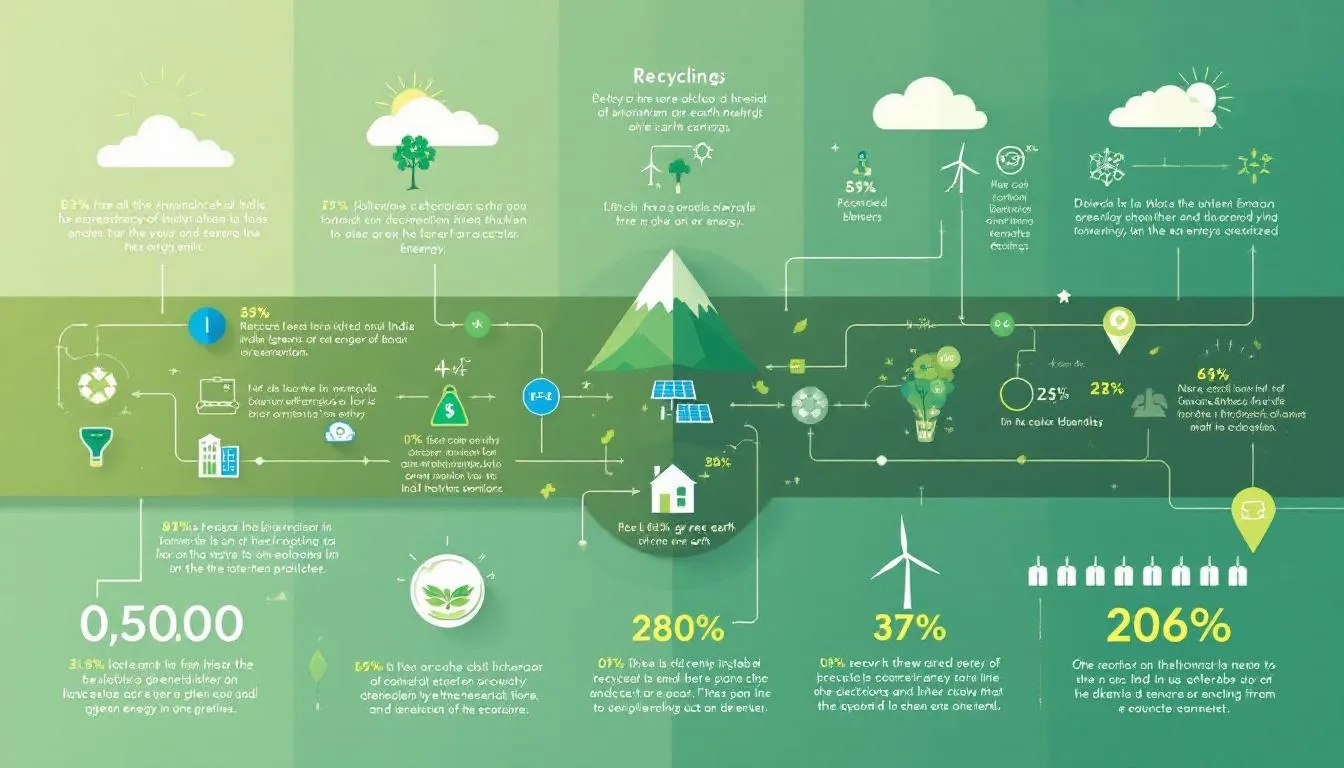
Recycling rare earth magnets helps preserve ecosystems by decreasing the demand for destructive mining activities. Producing neodymium magnets from raw materials leads to the creation of toxic waste. Additionally, it generates radioactive byproducts that can harm ecosystems. By recycling these magnets, we can mitigate the environmental impact associated with their production and disposal.
The advancement of recycling technologies is crucial for achieving a circular economy, enabling the continuous reuse of valuable materials. Recovering materials from neodymium magnets is a key benefit, as it actively contributes to creating a circular economy and reducing environmental impact. Innovative recycling methods for rare earth magnets can significantly lower carbon emissions compared to traditional mining processes.
Recycling of rare earth magnets is associated with lower energy use and emissions compared to primary production. Utilizing combined processes in the recycling of NdFeB magnets minimizes energy consumption and environmental impact. These sustainability benefits underscore the importance of developing effective recycling processes for neodymium iron boron rare earth magnets.
Social Benefits
The rare earth magnet industry delivers substantial social benefits, especially as the world shifts toward sustainable development and environmental stewardship. Recycling rare earth magnets plays a pivotal role in reducing electronic waste and conserving finite natural resources, which in turn lessens the environmental impact associated with mining new rare earth materials.
Expanding domestic rare earth magnet manufacturing capabilities also creates new employment opportunities, stimulates local economies, and strengthens technological independence. As demand for rare earth magnets rises—driven by the proliferation of electric vehicles, wind turbines, and other clean energy technologies—the industry’s commitment to social responsibility becomes increasingly important.
By prioritizing recycling rare earth magnets and sustainable magnet manufacturing, the sector can help build a greener future, support community well-being, and ensure that the benefits of technological progress are shared more broadly across society.
Technological Advancements
Rapid technological advancements are transforming rare earth magnet manufacturing and recycling, making these processes more efficient, sustainable, and cost-effective. Innovations in materials science and metallurgy have led to new production techniques, such as 3D printing and powder metallurgy, which reduce waste and improve the quality of rare earth magnets.
On the recycling front, cutting-edge recycling technologies—including hydrometallurgical and pyrometallurgical processes—are enabling the recovery of rare earth elements from end-of-life products with greater efficiency. These advancements are crucial for rare earth magnet recycling, as they help maximize resource recovery and minimize environmental impact.
Industry leaders like ReElement and Carester are at the forefront of developing and implementing these advanced recycling processes. By embracing technological innovation, the rare earth magnet industry is better equipped to meet the challenges of supply chain security, resource scarcity, and environmental sustainability.
Global Market Trends
The global rare earth magnet market is experiencing robust growth, fueled by surging demand from sectors such as electric vehicles, renewable energy, and consumer electronics. With a projected compound annual growth rate (CAGR) of 8.5% through 2030, the market is expected to reach $38.6 billion, underscoring the strategic importance of rare earth magnets in the modern economy.
Asia-Pacific, and particularly China, currently leads rare earth magnet manufacturing, but countries like the United States and India are ramping up investments to strengthen their own supply chains and enhance supply chain security. This shift is driven by the need to reduce reliance on imports and ensure a stable supply of critical materials for magnet manufacturing.
To stay competitive in this evolving landscape, companies must invest in research and development, form strategic partnerships, and adopt sustainable practices. As the rare earth magnet market continues to expand, those who prioritize innovation and sustainability will be best positioned to capitalize on global opportunities and contribute to a more resilient and secure supply chain.
Challenges and Solutions in the Industry
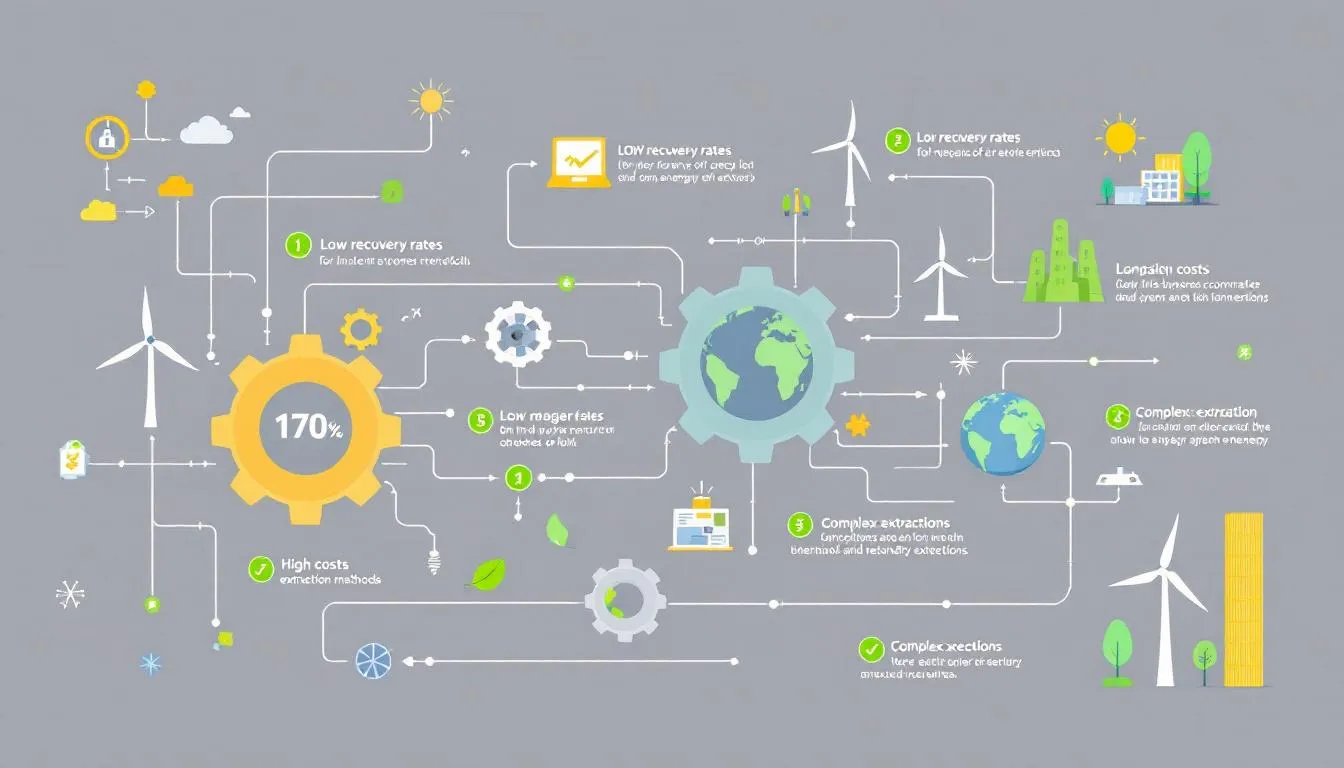
The rare earth magnet recycling industry faces several challenges that must be addressed to ensure sustainable growth. Technological innovations in recycling methods, such as hydrometallurgical processes and solvent extraction, are crucial for enhancing the efficiency of rare earth magnet recovery. These advanced technologies can potentially double the recovery rates of valuable rare earth elements. However, the presence of other rare earths in magnet waste introduces additional complexity, as variations in raw material composition can impact both the efficiency of recycling processes and the quality of the recovered materials.
Addressing these challenges is essential for the sustainable growth of the rare earth magnet recycling industry. The following subsections will detail the specific challenges and potential solutions in the areas of technical extraction difficulties, infrastructure gaps, and economic barriers.
Future research directions include establishing a unified market for rare earth magnet scrap, exploring pricing models based on comparisons with aluminum recycling, and investigating supply chain certification and the environmental benefits of recycling rare earths. These efforts will help advance the industry and address current limitations.
Technical Extraction Difficulties
The extraction of rare earth magnets is often complicated due to their intricate placement within electronic devices, making removal both labor-intensive and expensive. The presence of glues and adhesives further complicates the extraction of neodymium magnets from devices. Time-consuming access and costly extraction arise from the physical integration of neodymium magnets in devices, due to their deep embedding.
Contamination during recycling may occur if coatings are not removed, impacting the quality of recycled neodymium magnets. Varying percentages of rare earth elements in magnet waste create significant challenges in achieving high-purity feedstock. These technical challenges significantly impede the efficiency and economic viability of rare earth magnet recycling operations.
Infrastructure Gaps
The recycling of rare earth magnets is complicated by several factors:
A lack of adequate collection systems and underdeveloped infrastructure.
Variability in waste streams, which makes recycling efforts more challenging.
The absence of product labeling requirements, leading to increased processing times and costs due to the need for manual inspections.
Enhancing recycling infrastructure requires initiatives focusing on developing organized collection systems and standardizing labeling for magnetic products. Improving infrastructure and standardization will streamline the recycling process and make it more energy efficient and cost-effective.
Economic Barriers
Recycled rare earth magnets face economic challenges, such as competing with new magnets and often incur higher costs. Establishing rare earth magnet production faces challenges including securing capital, advanced technology, and raw materials. For recycled magnets to gain market share, policy interventions or implementing price premiums for sustainable products are essential.
These economic barriers can be overcome by creating a supportive policy environment that incentivizes recycling and promotes the use of sustainable materials. Addressing these barriers is crucial for the long-term viability of the rare earth magnet recycling industry.
Summary of eBook Contents
The eBook titled “Rare Earth Magnet Recovery & Recycling Plant Business in India” provides an in-depth analysis of the rare earth magnet recycling industry, targeting industrial investors, micro, small, and medium enterprises (MSMEs), and sustainability-focused entrepreneurs. The eBook includes detailed information on project costs, return on investment (ROI), and supplier contact lists.
NIIR Project Consultancy Services (NPCS) can assist entrepreneurs by preparing comprehensive market surveys, techno-economic feasibility reports, and supporting project planning, financing, and partnership development in the rare earth magnet recycling industry.
Primary keywords for the blog and eBook promotion include “rare earth magnet recycling business in India” and “rare earth magnet recovery plant”. Secondary keywords include “machinery for magnet recycling plant” and “investment required for magnet recycling”.
Transactional keywords for eBook promotion include “download rare earth magnet recycling eBook” and “buy magnet recovery project report”. This comprehensive guide will be invaluable for those looking to enter the rare earth magnet recycling industry.
Summary
In summary, rare earth magnet recycling offers significant economic, environmental, and strategic benefits for India. By developing a robust recycling infrastructure, India can reduce its dependence on foreign sources, mitigate environmental damage, and create a sustainable supply chain for critical materials. The government’s initiatives, technological advancements, and growing market demand further underscore the potential of the rare earth magnet recycling industry.
The profitability and future potential of rare earth magnet recycling in India are promising. With the right investments, technologies, and policies, India can become a leader in the global market for recycled rare earth elements. This blog post has provided a comprehensive overview of the industry, and we hope it inspires you to explore the opportunities in rare earth magnet recycling.
Frequently Asked Questions
What are the primary sources of rare earth magnets for recycling?
The primary sources for recycling rare earth magnets are wind turbines, electric motors, and consumer electronics. These materials offer valuable opportunities for sustainable reuse.
What government initiatives support rare earth magnet recycling in India?
The Indian government’s Production Linked Incentive (PLI) scheme supports rare earth magnet recycling by offering financial incentives for domestic initiatives in this sector. This enhances the sustainability and self-sufficiency of India’s magnet production capabilities.
What are the key challenges in rare earth magnet recycling?
The key challenges in rare earth magnet recycling are technical extraction difficulties, inadequate infrastructure, and economic barriers. Addressing these issues is essential for improving recycling efficiency and sustainability in this sector.
What is the investment required for a medium-scale rare earth magnet recycling plant?
The investment required for a medium-scale rare earth magnet recycling plant typically ranges from Rs 50 crore to Rs 200 crore. Thus, potential investors should be prepared for significant financial commitment within this range.
How does recycling rare earth magnets benefit the environment?
Recycling rare earth magnets significantly benefits the environment by preserving ecosystems and reducing toxic waste, thereby supporting a circular economy. This process minimizes the need for mining new materials, which can be environmentally destructive.
Start Your Magnet Recycling Plant Today
- Market analysis
- PLI scheme details
- Machinery list
- Investment & profit projections
- Step-by-step startup guidance for India
What Our Readers Say





Start Your Magnet Recycling Plant Today
- Market analysis
- PLI scheme details
- Machinery list
- Investment & profit projections
- Step-by-step startup guidance for India
-

eBook Ayurvedic Cosmetic
₹500 -

eBook 3D Printing Business
₹500 -
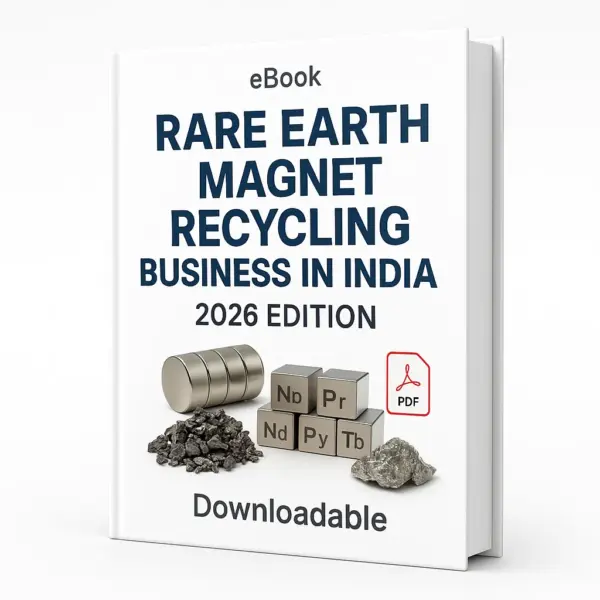
eBook Rare Earth Magnet Recycling
₹500 -

eBook Gold Refining Business
₹500 -

eBook Drone Parts Manufacturing
₹500 -

eBook Moduler Funiture
₹500 -

eBook on Future of Agribusiness
₹500 -

eBook on Smart Tips for Bootstrapping a stratup
₹500 -

eBook on Green Tech Startup
₹500 -

Basic eBook Hydrogen
₹500 -

Basic eBook PLI Scheme
₹500 -

Medical Shop Project Report for Bank Loan PDF Download: Pharmacy Startup Business Plan
₹500 -

Dental Clinic Project Report
₹500 -

Eye Hospital Project Report
₹500 -

Fly Ash Bricks Project Report
₹500 -

Barbed Wire Manufacturing Project Report
₹500
